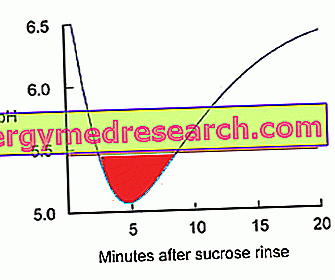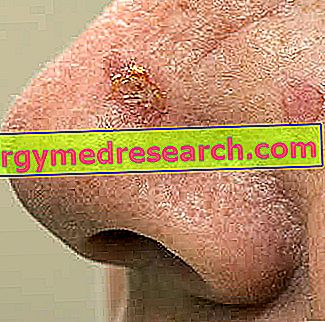Related articles: Neurofibromatosis
Definition
Neurofibromatosis is a group of genetic diseases linked by the formation of tumors along the course of peripheral nerves (neurofibromas and schwannomas).
Neurofibromatosis is distinguished by 2 main forms:
- Neurofibromatosis type 1 (NF1): is the most frequent form, characterized by neurocutaneous involvement and possible orthopedic, oncological and internal complications. The gene responsible for type 1 neurofibromatosis is located on chromosome 17q11.2.
- Neurofibromatosis type 2 (NF2): it is responsible for about 10% of cases and typically occurs with a congenital bilateral acoustic neurinoma; the aberrations responsible for the disease involve chromosome 22q11.
In about 30-50% of cases, the mutations or deletions responsible for neurofibromatosis occur sporadically in the affected individual (so they are not present in other relatives). In the remaining part of the patients, on the other hand, the disease is transmitted in an autosomal dominant manner.
Most common symptoms and signs *
- Tinnitus
- Tinnitus
- Ataxia
- Bone Callus
- palpitations
- Convulsions
- Seizures
- Learning difficulties
- Dysarthria
- dyscalculia
- Skin discoloration
- dysgraphia
- Abdominal pain
- Sore legs
- Hydrocephalus
- Hypertension
- Hearing loss
- Hypoaesthesia
- Freckles
- macrocephaly
- macules
- Headache
- Nystagmus
- Nodule
- Corneal opacity
- Plugged ears
- Otalgia
- Loss of coordination of movements
- Loss of balance
- itch
- Reduced vision
- Mental delay
- Scoliosis
- Drowsiness
- Dizziness
- Double vision
Further indications
Type 1 neurofibromatosis
Neurofibromatosis type 1 is characterized by the appearance on the skin of numerous coffee-milk spots (six or more) before the age of three years. Subsequently, in various parts of the body, neurofibromas appear, that is, tumors of the sheath of peripheral nerves that appear as cutaneous, subcutaneous or plexiform lesions .

Serious case of neurofibromatosis type 1: patient with high numbers of neurofibromas. 2p2play / Shutterstock.com - See other Neurofibromatosis Photos
Furthermore, freckles can occur in skin folds (in particular, in the axillae, groin and neck). The evolution of the disease is very variable: in some cases, serious manifestations appear, such as brain tumors, glioma (glial cell tumor) of the optic nerve, Lisch nodules (iris lesions), specific skeletal defects (including dysplasias of the long bones and scoliosis), epilepsy and adrenal pheochromocytoma. In other patients, learning delay and behavioral disturbances may be observed.
Type 2 neurofibromatosis
Neurofibromatosis type 2 is usually more severe, due to the constant presence of tumors affecting the acoustic nerve (neurinomas) and bilateral schwannomas (benign neoplasms of Schwann cells). These can cause tinnitus, deafness, dizziness, ataxia and other neurological disorders. Furthermore, neoplasms of the brain or spinal cord may occur (eg meningiomas and astrocytomas). In addition, many patients develop cataracts (crystalline opacity) or juvenile retinal hamartomas.
Diagnosis and treatment
The diagnosis of neurofibromatosis is based essentially on clinical and family history. In families at risk it is possible to perform prenatal diagnosis, through amniocentesis or villocentesis.
As for the treatment, there are no specific and resolutive approaches. Therefore, we try to intervene to control the symptoms. Tumors can be surgically removed and managed with radiotherapy and chemotherapy.



